Open Program 2025
Theme 2025 ATMOSPHERES
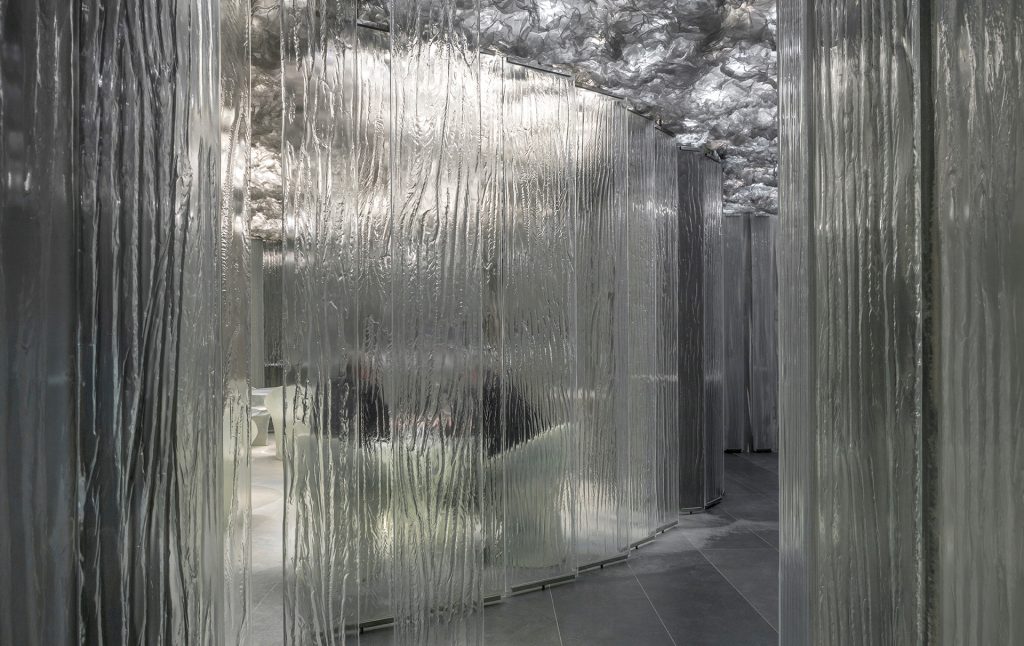
Atmospheres are one of a space’s most subjective and emotional dimensions. They arise from the complex interaction between physical elements, such as light, materials, colours, and shapes, and immaterial factors, such as emotions, memories, and senses. Although they cannot be quantified or delimited, the intangible has a transformative impact: It defines the essence of things beyond their physical appearance. It connects people with something deep and meaningful.
Creating atmospheres can become a conscious act, using tangible elements to influence the intangible. It is a game between the material and the immaterial, almost like an alchemical process, where the transmutations of matter have the power to transcend the conscious and reach the dimensions of the unconscious.
Light and shadow, materiality and texture, proportions, deepness, sound and acoustics, and colour and smell make up the palette that defines an atmosphere and determines the emotional intensity of a space. Understanding the intangible involves observing, feeling, and interpreting that which is not explicit; it is where subjectivity and transcendence dwell. When designing, referring to “feeling the place” means understanding beyond words and perceiving beyond thought. It is a call to create works that are spiritually and emotionally connected to the unique character of each place, offering design solutions with a soul. That intangible thing we call atmosphere.
Lecture Series RCR TALKS
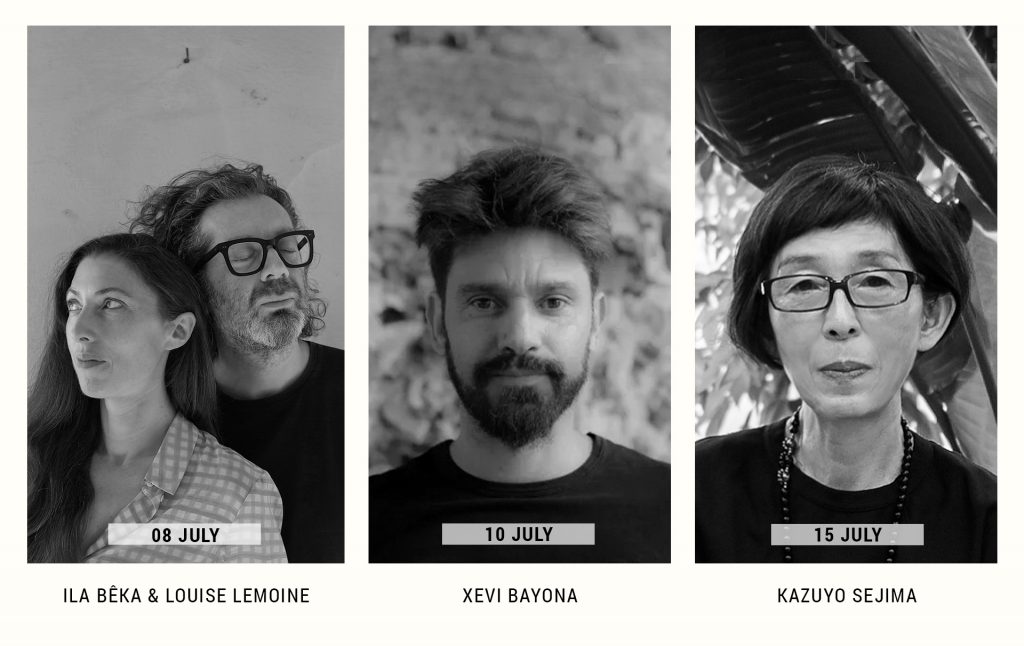
The three-conference series will be led by filmmakers and visual artists Ila Bêka and Louise Lemoine, whose work lies at the intersection of visual arts, non-fiction cinema, and architecture; by Catalan architect Xevi Bayona, artistic director of the Lluèrnia Festival of Fire and Light in Olot, and founder of Bayona Studio—a space dedicated to experimentation and interdisciplinary research in architecture, urbanism, art, landscape, and ephemeral and light installations; and by Japanese architect Kazuyo Sejima, winner of more than fifteen awards and recognitions, including the 2010 Pritzker Prize, which she shared with her partner at SANAA, architect Ryue Nishizawa.
FOREST MATTER VII
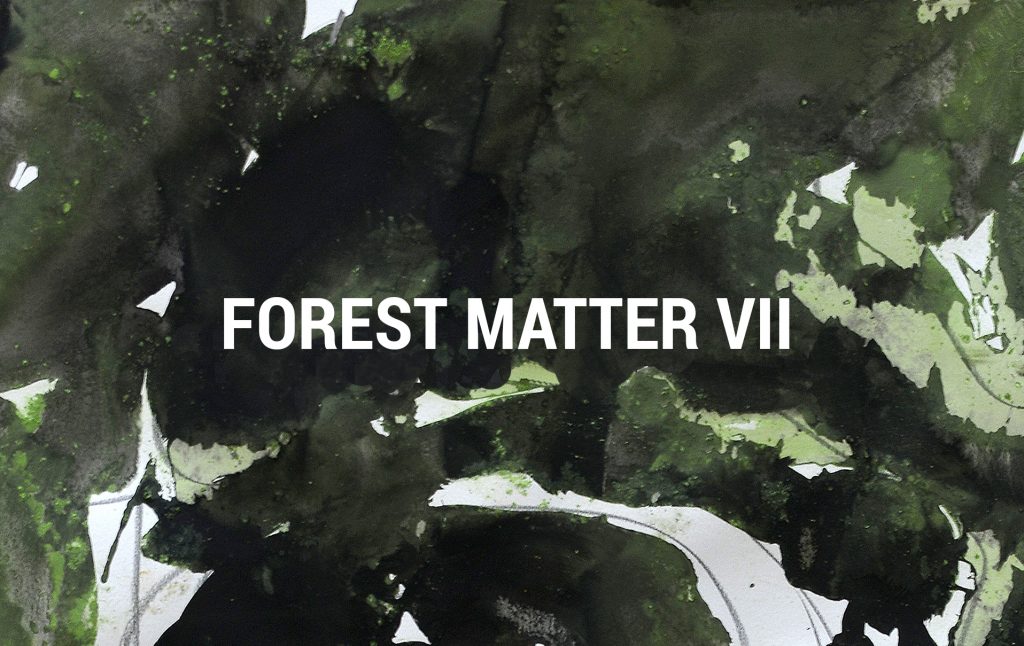
Forest Matter VII and Atmospheres
Forests are much more than just trees; they are complex systems full of interconnections, stories, and sensations. Atmospheres are one of the most subjective and emotional dimensions of a space. They emerge from the intricate interaction between physical elements—such as light, materials, colors, and shapes—and immaterial factors, including emotions, memories, and senses. Although they cannot be quantified or defined, the intangible has a transformative impact: it shapes the essence of things beyond their physical appearance and connects people with something deep and meaningful.
Forest Matter is a project by RCR Bunka Fundació and LABEA – Laboratory of art, science, and nature, created in 2019 and inspired by the deep connection between RCR Arquitectes‘ work and trees as a primary material for constructing spaces for life.
The audiovisual cycle opens the Open Program conferences and celebrates the poetic power of trees.
Curated by Lívia Diniz and the LABEA team, the cycle has presented over 50 works by artists from around the world in various contexts and festivals, including Arbola Fest (Navarra), Eima Festival (Mallorca), La Pinochera (Canary Islands), and Be Festival (United Kingdom), as well as through the channels of the Instituto Cervantes.
LABEA – Laboratory of art, science, and nature is a platform that fosters dialogue between artistic, scientific, and environmental disciplines to generate new ways of understanding and engaging with our natural surroundings.
International call for audiovisual creations FOREST MATTER VII
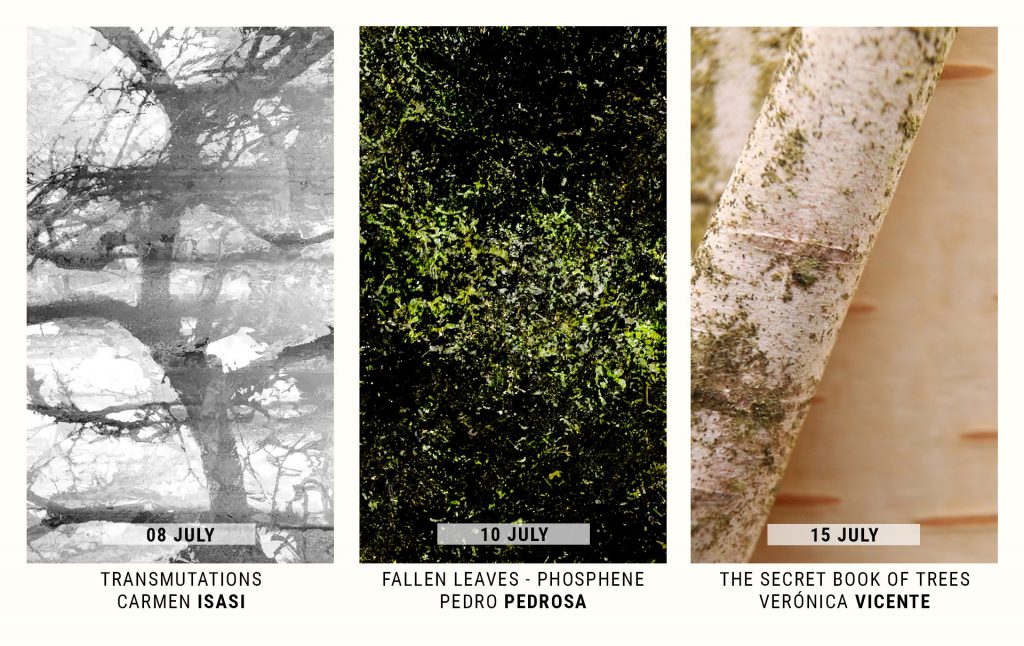
Forest Matter VII celebrates the poetic power of trees with a new international call for audiovisual creations, seeking original perspectives on forests and forest ecosystems. Forests are complex systems where the tangible and intangible intertwine. Beyond their physical appearance, their atmosphere evokes emotions, memories, and sensations, creating a deep connection with those who inhabit them.
As part of the seventh edition of Forest Matter, an international call for audiovisual works with a maximum duration of 10 minutes was launched, decisively aimed at promoting new perspectives on forests and forest ecosystems. This call successfully garnered over 200 proposals from various countries. Following a thorough evaluation process, the jury awarded the ex aequo prize to Spanish creators Carmen Isasi and Verónica Vicente, as well as to Brazilian artist Pedro Pedrosa. They will collectively share a total prize of 1,000 euros.
The three selected works are firmly included in the official program of Forest Matter VII, which is a key component of the RCR Open Program 2025. This inclusion presents a valuable opportunity for the artists to network with other professionals in the artistic and environmental sectors, significantly enhancing their collaborative and professional development pathways. Furthermore, their works will be strongly considered for future paid collaborations in upcoming editions of Forest Matter.
Tuesday, July 8, 2024 · Forest Matter VII · Pati de l'Hospici · Olot · 19h
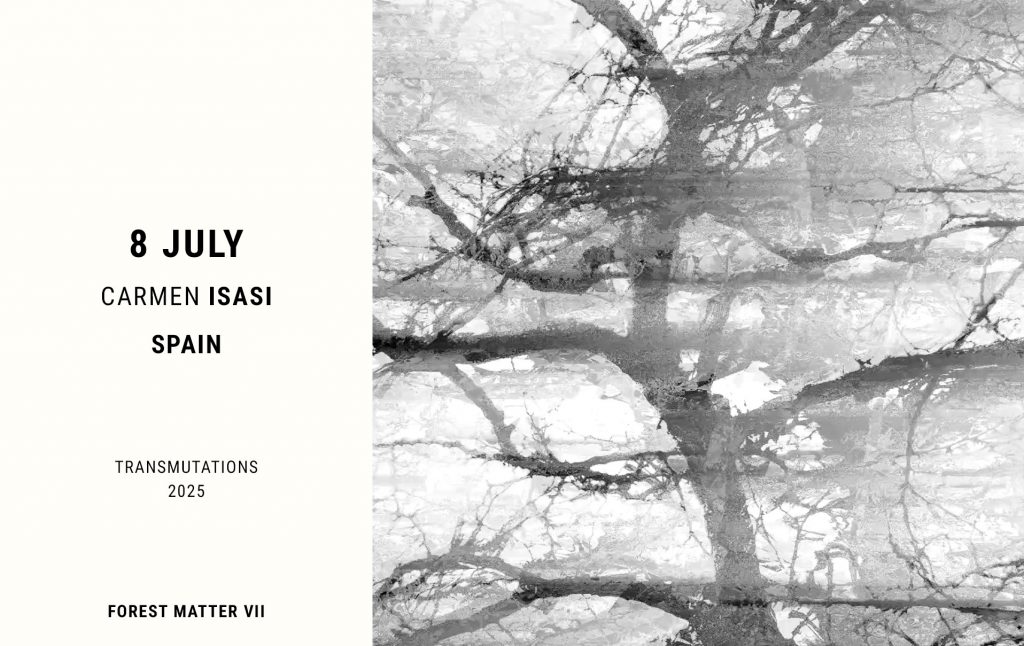
FOREST MATTER VII · Transmutations (2025) · Carmen Isasi, Spain · 5’44”
Transmutations is a work that explores the fusion between nature and abstraction through rhythm and moving images. By combining abstract drawings with fragments of trees in a fluid visual dialogue, the piece plays with the ambiguity between the figurative and the abstract. The image becomes living matter, where the organic and the gestural intertwine like roots. Sound energises the vital pulse that guides the transformation of the images, generating a kinaesthetic interplay where sonic vibration and visual metamorphosis merge in a hypnotic dance. The work blurs the boundaries between the natural and the created, the static and the energetic, the recognisable and the unknown.
Carmen Isasi (Bilbao, Spain, 1958) is a multidisciplinary artist who incorporates new media and languages into her work as demanded by each project and piece. She holds a degree in Fine Arts from UPV and a Master’s in Aesthetics and Theory of the Arts from UAM. Her practice includes drawing, artist books, photography, photogravure, video, installations, electronic music, and virtual reality. Among her recent projects are Deshabitadas, addressing the migration crisis, and Vestigios, which alludes to a fragmented and objectified nature. She has held numerous solo and group exhibitions and has participated in national and international shows and festivals. She currently lives and works in Madrid.
Tuesday, July 8, 2024 · Lecture · Pati de l'Hospici · Olot · 19h
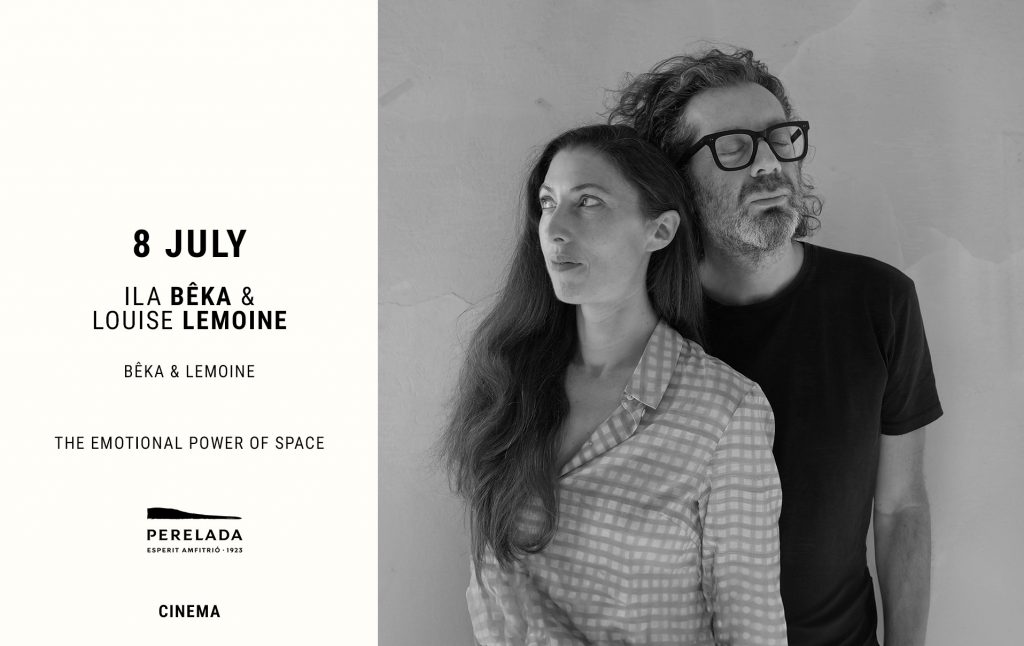
CINEMA · The Emotional Power of Space · Ila Bêka and Louise Lemoine · Bêka & Lemoine
Presented by Joan Burdeus Soler, a philosopher, journalist, and screenwriter specialising in television, cinema, contemporary culture, and philosophical thought
This conference is supported by Perelada Vins i Caves.
How does space affect our physical, psychological and emotional state? Artists and filmmakers Bêka & Lemoine have been exploring this question in their films for 20 years, collecting countless intimate stories, each of which reveals the intuitive and irrational forces at play in our relationship with space.
Ila Bêka (Latisana, Italy, 1967) graduated as an architect from the Università Iuav di Venezia and the École Nationale Supérieure d’Architecture de Paris-Belleville, where notable figures like Aldo Rossi, Manfredo Tafuri, Vittorio Gregotti, Massimo Cacciari, Bernardo Secchi, Gino Valle, Ugo La Pietra, Henri Ciriani, and Jacques Lucan influenced him.
Louise Lemoine (Bordeaux, France, 1981) studied cinema and visual arts at Sorbonne University, developing a unique storytelling style that blends documentary and narrative techniques.
As artists, filmmakers, and researchers, they work at the intersection of visual arts, non-fiction cinema, and architecture. For the past twenty years, they have been experimenting with new narrative and cinematic forms to explore how people experience, perceive, and relate to space from emotional, social, and cultural perspectives.
Their films have gained international recognition and are showcased at major film festivals and art museums. In 2016, MoMA in New York acquired their complete body of work for its permanent collection. Their works are also in other significant public and private art collections, such as MAXXI—The National Museum of 21st Century Arts (Rome, Italy), CNAP—Centre National des Arts Plastiques (Paris, France), and Fondazione Prada (Milan, Italy).
They have produced over thirty films, including Koolhaas Houselife (2008), Barbicania (2014), The Infinite Happiness (2015), Moriyama San (2017), Tokyo Ride (2020), and the city-matographic odyssey in 12 films, Homo Urbanus (2017–2023).
They are regularly invited to lecture and teach at universities such as the Harvard Graduate School of Design (GSD), Columbia University’s Graduate School of Architecture, Planning and Preservation (GSAPP) in New York, the Accademia di Architettura in Mendrisio (Switzerland), and the Architectural Association School in London (UK).
In 2023, they published The Emotional Power of Space (B&P ed.), which examines space’s emotional, social, and cultural aspects. More information about the book
Bêka & Lemoine · Web
Thursday, July 10, 2024 · Forest Matter VII · Pati de l'Hospici · Olot · 19h
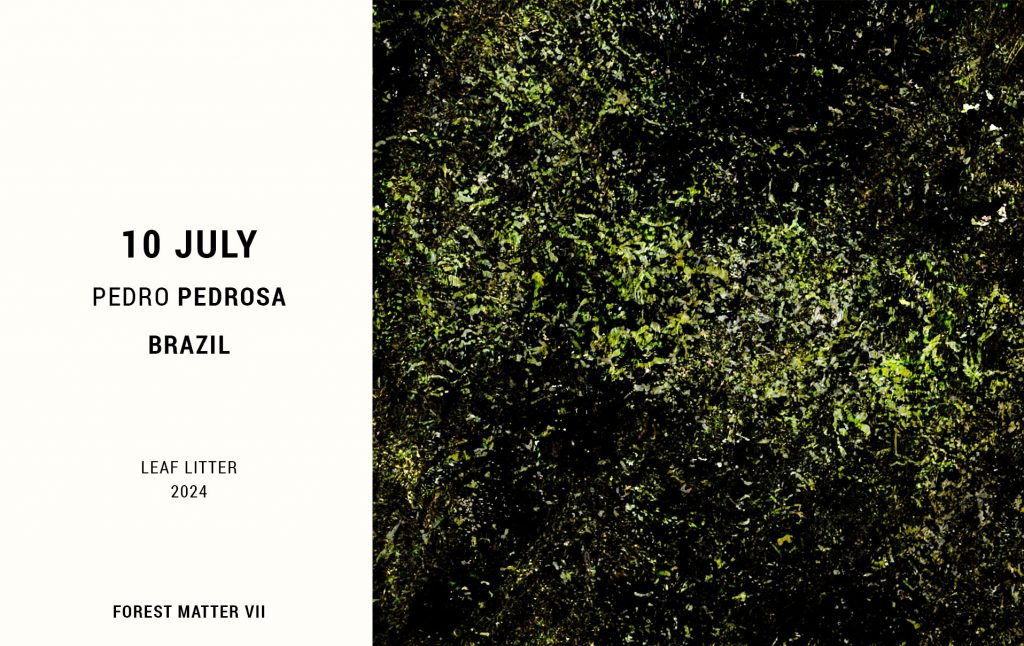
FOREST MATTER VII · Leaf Litter (2024) · Pedro Pedrosa, Brazil · 4’48”
A visual journey where the dry leaves of leaf litter gaze at the crowns of living, moving trees. A meeting point between the visual patterns we perceive when we close our eyes and nature’s nonlinear organisation.
Pedro Pedrosa is a Brazilian multimedia visual artist specialising in music, audiovisual work, and theatre. He directed and edited the video art short film Du Grain dans l’Air, which received the Special Jury Diploma at the T-Short Film Festival. In 2024, he released his debut album, Passo ou Ponto, featuring original songs, and was also responsible for the project’s visual identity, including cover design and directing the music videos. Pedro has a particular interest in the intersection of different artistic formats and languages, creating digital works that combine drawings and paintings through digital manipulation.
Thursday, July 10, 2024 · Lecture · Pati de l'Hospici · Olot · 19h
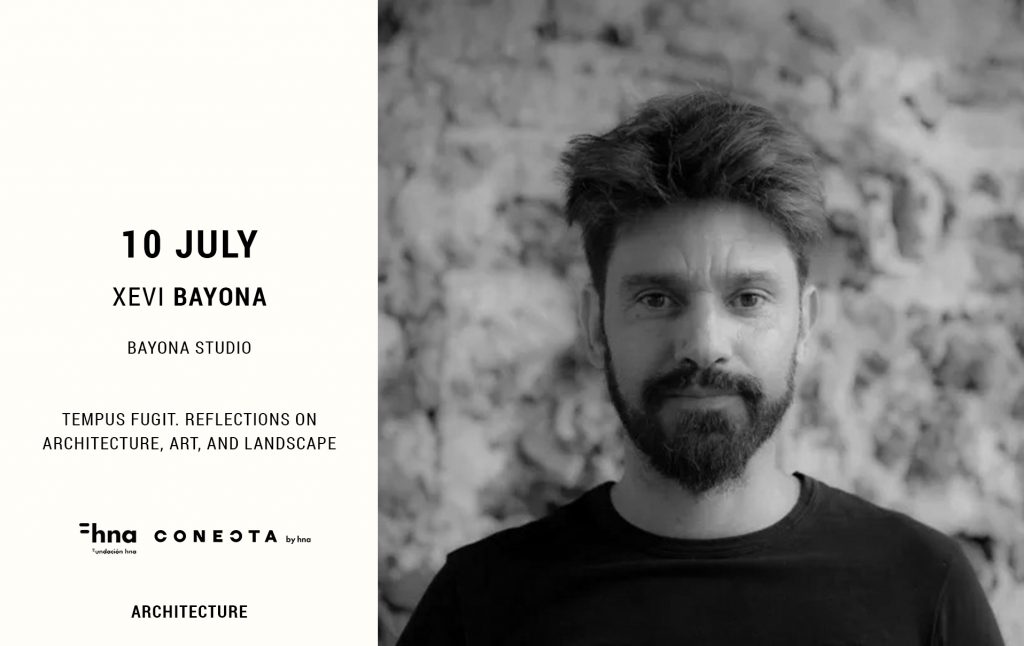
ARCHITECTURE · Tempus Fugit. Reflections on Architecture, Art, and Landscape · Xevi Bayona · Bayona Studio
Presented by Jordi Moret i Vayreda, delegate of the Garrotxa-Ripollès of the Architects’ Association of Catalonia (COAC)
This conference is supported by the hna FOUNDATION and is a beneficiary of the CONECTA by hna program.
A series of questions designed to explore how architecture can create atmospheres that evoke emotions, how art has the power to fill the soul, and how time becomes a tool for reflection. Through prototypical projects, built structures, erratic prototypes, and intentional sketches for research, this work seeks a beauty too often forgotten. There are no definitive answers; uncertainty becomes an opportunity. This is an ongoing pursuit of what is read between the lines, of the subtle and the ethereal, of what reason alone cannot explain. A journey through time. Tempus fugit.
Xevi Bayona (Olot, Spain, 1982) is an architect from the Barcelona School of Architecture (ETSAB-UPC), where he also obtained a postgraduate degree in Landscape Architecture and a master’s degree in theory and practice of architectural projects. Since 2008, he has been a lecturer at the Polytechnic University of Girona, and since 2018, he has been a lecturer on the international master’s degree in ephemeral architecture at Elisava.
Bayona Studio is a workshop and studio focused on experimentation and research, combining different disciplines that complement each other: architecture, urban planning, art, landscape, and light. His works include the rehabilitation of the Tortosa State Bridge over the Ebro River, the rehabilitation of the sports area of Sant Jaume de Llierca and the Olot Trade Fair, among others.
Since 2017, he has been collaborating with Àlex Posada of MID Studio and has been the artistic director of the Lluèrnia Festival in Olot since its beginnings. He has received numerous national and international awards, including three FAD awards, and has given lectures, workshops, and projects in various European cities.
Tuesday, July 15, 2024 · Forest Matter VII · Pati de l'Hospici · Olot · 19h
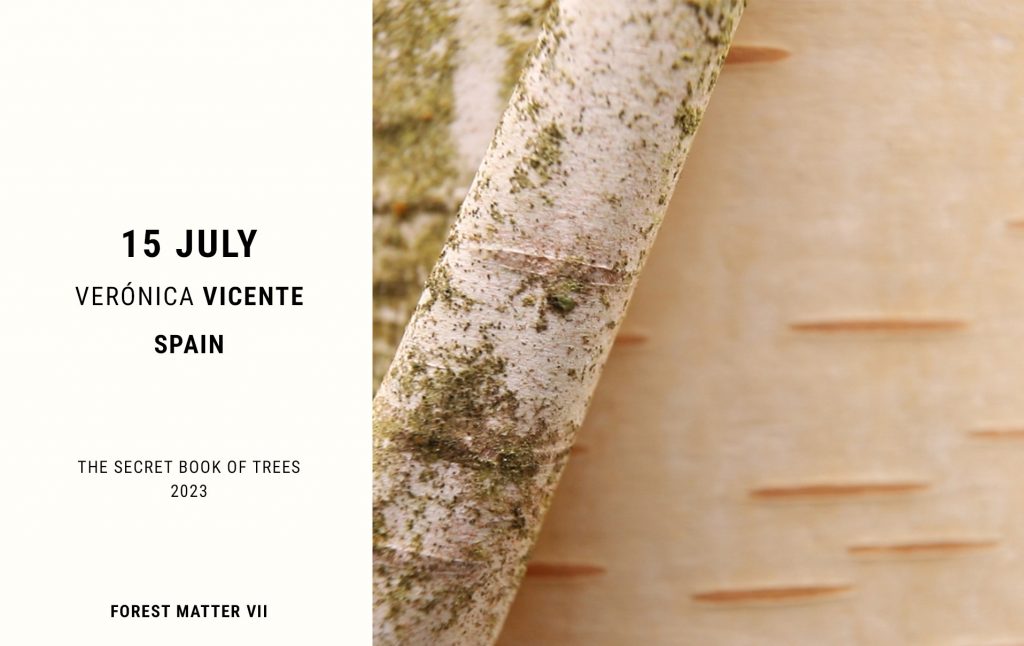
FOREST MATTER VII · The Secret Book of Trees (2023) · Verónica Vicente, Spain · 3’20”
The Secret Book of Trees is written in the purest and wildest of languages. Though its writing resembles an encrypted code, it speaks to the nature of identity—how the natural is unrepeatable and unmatched. The bark of the Himalayan Birch, scaly and composed of thin layers, appears in nature as a hidden, intimate book. Instinct drives us to open it and discover in its pages the language of lenticels. These marks, which serve a respiratory function, resemble inscribed codes—each as unique as our fingerprints, moles, or freckles. As John Fowles writes in his essay The Tree, “nature is not a place to revel in, but a place to be”.
Verónica Vicente (Tomiño, Spain, 1988) is a visual artist and current doctoral candidate in the field of Arts and Education. She holds a degree in Fine Arts and master’s degrees in photography, museology, and art education. She has received awards from the Enaire Foundation, the National Museum of Sculpture, and the Cerveira Biennial (Portugal), as well as grants such as Formarte, which allowed her to reside in Paris (France), and REGA from the City of Culture (Spain). She has held solo exhibitions in venues such as Fundación RAC (Pontevedra), Espacio Alexandra (Santander, PHotoESPAÑA Off), and La Gran gallery (Madrid). Her work has been shown in institutions such as the Centro Galego de Arte Contemporánea (CGAC), the Royal Botanical Garden (Madrid), and La Panera (Lleida), and is part of public collections in Spain, Portugal, and France.
Tuesday, July 15, 2024 · Lecture · Pati de l'Hospici · Olot · 19h
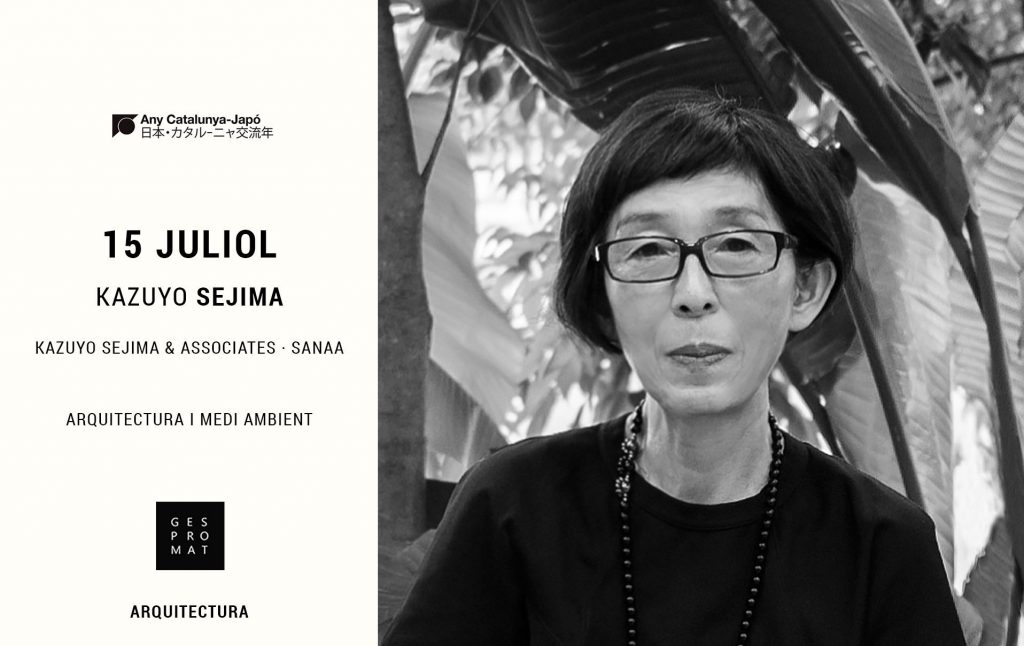
ARCHITECTURE · Architecture and Environment · Kazuyo Sejima · Kazuyo Sejima & Associates / SANAA
Presented by Guim Costa i Calsamiglia, Dean of the Architects’ Association of Catalonia (COAC)
This conference is supported by Cercle Gespromat and forms part of the official Catalonia–Japan Year program, a joint initiative of the Government of Catalonia and the Consulate General of Japan in Barcelona.
Kazuyo Sejima expresses, “I have always been interested in creating a place that brings people together, like in a park.” This concept encapsulates her architectural approach, which is dedicated to creating atmospheres that foster coexistence, freedom, and mutual respect. She clarifies that a park is a place that respects and values diversity, allows for a variety of experiences, and combines independence and collectivity, as well as continuity and diversity. In her projects, Sejima translates this vision into open and sensitive spaces, where the physical environment enhances the emotional experience. Her work demonstrates how architecture can shape environments that, beyond their form, resonate deeply with those who inhabit them..
Kazuyo Sejima (Mito, Ibaraki Prefecture, Japan, 1956) earned a degree in architecture from Japan Women’s University. In 1981, she joined Toyo Ito’s architectural office. In 1987, she established her practice in Tokyo, Kazuyo Sejima & Associates, and in 1992, she was named the Japan Institute of Architects’ Young Architect of the Year. In 1995, Sejima and Ryue Nishizawa co-founded SANAA (Sejima + Nishizawa & Associates), a firm internationally recognised for innovative and influential designs. Their notable projects include the Rolex Learning Centre in Lausanne, Switzerland; the Glass Pavilion at the Toledo Museum of Art in Ohio; the New Museum of Contemporary Art in New York; the Serpentine Pavilion in London; the Christian Dior Building in Omotesando, Tokyo; and the 21st Century Museum of Contemporary Art in Kanazawa, which was awarded the Golden Lion in 2004 for the most significant work at the 9th International Architecture Exhibition of the Venice Biennale. Their work has been widely exhibited across the United States and Europe.
Throughout their careers, Sejima and Nishizawa have received numerous accolades, including the Arnold Brunner Memorial Medal from the American Academy of Arts and Letters (2002), the Architectural Institute of Japan’s Design Prize (2006), the Kunstpreis Berlin from the Berlin Academy of Arts (2007), and the prestigious Pritzker Architecture Prize (2010). In 2025, Sejima was honoured with the Charlotte Perriand Award in France.
Beyond her architectural practice, Sejima has taught at leading institutions such as Princeton University, the Polytechnique de Lausanne, the Polytechnic University of Milan, Tama Art University, Yokohama National University, and Keio University. Since 2022, she has been the Tokyo Metropolitan Teien Art Museum director.
The Pritzker Architecture Prize 2010 · Web
Partners 2025
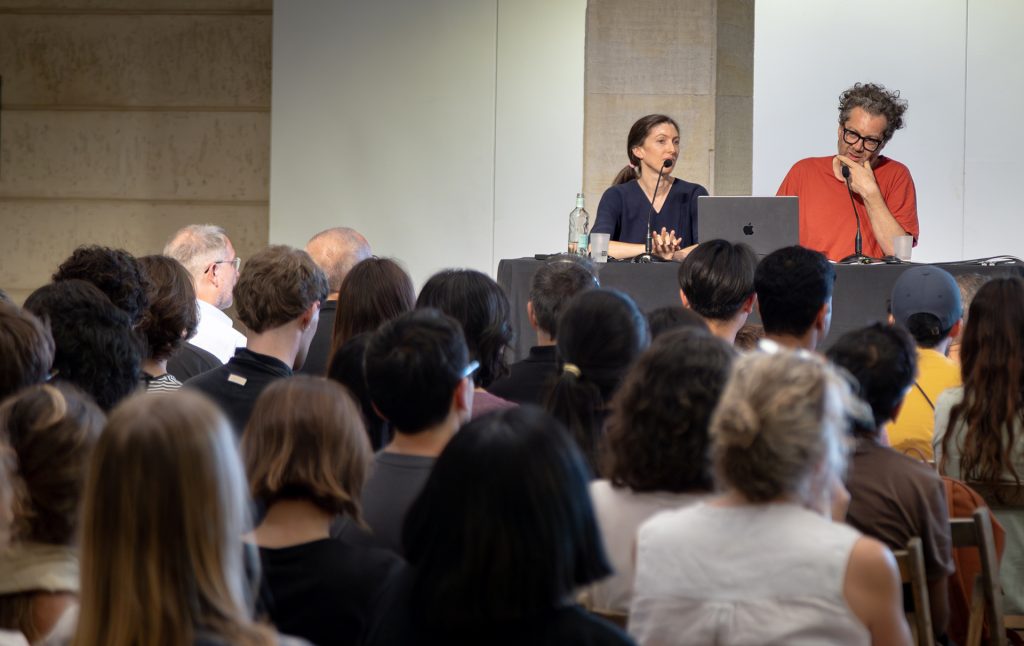
RCR Open Program is an activity organised by RCR BUNKA RCR, with the financial and logistical support of the following institutions and companies, without which it would not be possible to materialise it.
To all of them, our most sincere thanks.
Organised by

Main Partners

Partner Institutions and Companies

Media Partners

